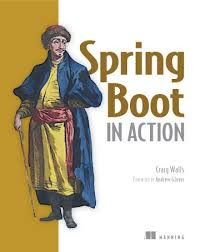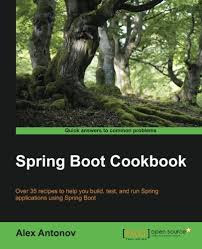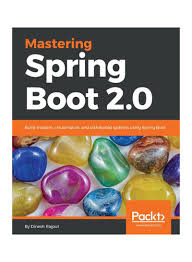Best Spring Boot Books
1. Introduction
In this article, We'll show the best books to read and learn Spring Boot from beginner to becoming an expert in this year.
In general, Many developers struggle to find the best books to learn any technology. Here, you will get the most useful to the beginner's step by the steep learning curve and with a clear explanation.
Spring Boot Tutorials
2. Spring Boot in Action Paperback by Craig Walls
You can be pretty sure of what you're going to get with a Manning In Action book and Spring Boot in Action is no exception. It's clear, friendly while not being over-familiar and above all a pleasure to read. In fact, I struggled to put it down. I've got back into reading recently, but this is the first technical book I have fully read for quite a while.
The thing is I’m a huge fan of Java. This brings me into a lot of ridicule. There are lots of other software development technologies such as Ruby on Rails and Node.js which are arguably more productive because they do a lot of the standard web application boilerplate for you. The Spring library provides the Java developer with a lot of web application boilerplate as well, but there is no getting away the fact that Java is more verbose than some of the other options and you need a lot more code and configuration to wire the boilerplate together.
Spring Boot in Action clearly explains all of this and more including running an embedded tomcat and testing with Selenium. It’s not a long book and the last 35% or so is appendices, but it’s the sort of useful information you need as a Spring Boot developer. Being short also means that Spring Boot does feel like a massive mountain to climb and conquer. If I had one criticism of the book, it would be that the chapter on deployment should be near the beginning, not right at the end
[Buy Online ##eye##]
3. Spring Boot Cookbook By Alex Antonov
This book is good once you get some idea about Spring Boot concepts.
Additionally, Over 35 recipes to help you build, test, and run Spring applications using Spring Boot and will make you expert for interviews.
Content this book covers is very practical and concise. 99% of the code in the book is 'run as is' which is excellent.
The way this book teaches each concept with Spring Boot is excellent and it has a nice presentation on how each goal should be achieved with its step by step layout.
The sections 'How to do it' and 'what happened' were smartly designed to separate concepts from procedure to achieve a target. Covers very good area regarding Spring Boot, Docker section is very informative as well.
This book will provide many detailed insights about the inner workings of Spring Boot, as well as tips and recipes to integrate the third-party frameworks and components needed to build complex enterprise-scale applications.
Finally, the book will teach you how to create custom health indicators, and access monitoring data via HTTP and JMX.
[Buy Online ##eye##]
4. Mastering Spring Boot 2.0: Build modern, cloud-native, and distributed systems using Spring Boot
This book will help you to learn Spring boot along with micro-services architecture. It also covered AWS information and how to deploy microservices on docker. Java and Spring enthusiastic must buy this book. Strongly recommended reading from page 1 till last.
It is a newly released book in 2018 but still good to read that I study Spring boot and get overall practical knowledge by just reading it. It provides lots of theory and updated code and pictures for the demo. Dinesh is a Spring certified software engineer/architect. His book is based on the Spring official document. Hence the content is very reliable. Highly recommend.
This book will address the challenges related to power that come with Spring Boot's great configurability and flexibility. You will understand how Spring Boot configuration works under the hood, how to overwrite default configurations, and how to use advanced techniques to prepare Spring Boot applications to work in production. This book will also introduce readers to a relatively new topic in the Spring ecosystem – cloud-native patterns, reactive programming, and applications. Get up to speed with microservices with Spring Boot and Spring Cloud. Each chapter aims to solve a specific problem or teach you a useful skillset. By the end of this book, you will be proficient in building and deploying your Spring Boot application.
[Buy Online ##eye##]
5. Hands-On Microservices with Spring Boot and Spring Cloud: Build and deploy Java microservices using Spring Cloud, Istio, and Kubernetes
Soso. All moving parts are there, but too much space wasted with screenshots and (trivial) code snippets, where I would have liked a more in-depth explanation of the concepts. And then there are some issues I have, but that’s probably me: The architecture seems too bloated for the tiny use case presented throughout the book, Springfox is given a whole chapter in the book, although the project seems dead, and some things are IMHO completely wrong: If I read it correctly, the “async” reading, where the author deals with blocking I/O in Chapter 7 is not async at all. Nice to skim through, but not enough for a thorough introduction.
It's the most thorough examination of this topic I have seen to date. The example code is worth its weight in gold, even if it has a few minor problems. Just knowing that it worked as written for the author provides the reader with a baseline from which to work that is very valuable as a reference design/starting point. If you intend to try to go through all the examples on Windows, you will run into any issues, and it will take you longer. The test-em-all.bash script works on Git Bash for the first 12 chapters or so. I had some good luck with the Windows Subsystem for Linux - Ubuntu in the later chapters, but I will probably switch to a cloud instance or use my MacBook for the last 4 chapters. Again, this is a great book, well worth the price.
[Buy Online ##eye##]
6. Spring Microservices in Action By Morgan Bruce
As a practitioner of Microservice architecture, I approached this book with great expectations and interest, and I was not disappointed. This book is an important contribution to a general understanding of what Microservices are, how to practically reap the benefits they promise, and, in particular, how to manage them.
This book presents the reader with a path through all the questions above, based on experience. It significantly contributes to Microservices’ long-awaited descent from the peak of the hype curve onto the plateau of productivity. And it does so with great success.
In only 400 pages, the authors manage to take the reader through the whole Microservices journey, from high-level concepts to detailed examples of application logs. And that with plenty of code-, script- and tooling examples. If you are struggling with a monolith or experiencing architecture smell, or if you are starting out in a greenfield project and want the input to ensure successful delivery, I strongly recommend you make this book your companion.
[Buy Online ##eye##]
7. Conclusion
Finally, You must pick any one of the books from the above list based on your proficiency. If you are a beginner then start with Spring Boot in Action that provides good insights into internal concepts. Then you can choose from among the four remaining where you want to get advanced level and can crack the interview questions.






No comments:
Post a Comment
Please do not add any spam links in the comments section.